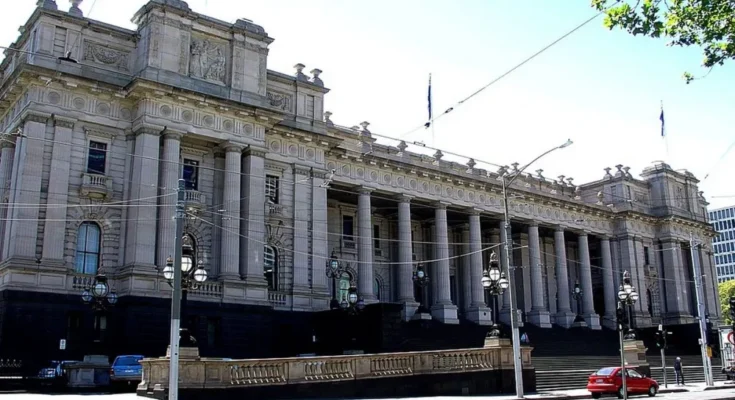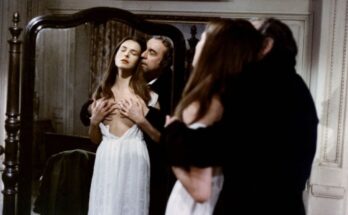The transition in architecture from Victorian opulence to modern minimalism beautifully illustrates the city’s historical, cultural, and technological evolution. The cityscape and streetscapes tell the tale of a history rich in intricate details and a present embracing sleek, modern lines and eco-friendly house designs in Melbourne. The change from Victorian to contemporary architecture illustrates the evolution of hectic preferences and more significant shifts in society’s values and technological advancements.
-
The Victorian Era: A Legacy of Opulence and Detail
The Gold Rush strongly shaped Victorian architecture in Melbourne in the mid-19th century. This economic boom led to a building frenzy, which in turn caused the construction of beautifully complicated structures that reflected the wealth and status of their owners. Victorian architecture is characterised by detailed artistry and decorative style.
The main features of Victorian house designs in Melbourne are detailed facades, intricate brickwork, wide porches, and ornamental gables, usually together with stained glass windows and iron lacework. Terraced houses are typical in suburbs such as Carlton, Fitzroy, and South Melbourne.
These houses exhibit typical Victorian features like tuckpointed brickwork, arched windows, and Hawthorn brick facades. The Royal Exhibition Building, a World Heritage Site, is the best example of this period’s grandeur, as its dome and interior are stunning.
-
Technological and Social Shifts Leading to Modernism
As the 20th century unfolded, significant social and technological changes influenced its architectural styles, particularly in the realm of house designs in Melbourne. The Great Depression and the publishing-war technology created the desire for more excellent, affordable creation, which became the reason for the Modernist motion, which was based on capability and simplicity in place of the aesthetics of decoration.
Modernist architecture in Melbourne adopted new materials like steel and glass. It reinforced concrete, which was economically viable and allowed for innovative forms and structures. This era was the turning point from the decadent excess to the design principle that appreciated the form’s simplicity and the structure’s sincerity.
Architects like Robin Boyd and Harry Seidler brought the transition from the dominant architectural style to the new one. The Walsh Street House is one of Boyd’s designs, which stressed transparency, light, and the integration of the indoor and outdoor spaces that Boyd was famous for.
Seidler’s works, including the iconic ICI House, introduced the International Style to Melbourne, showcasing the possibilities of glass and steel and changing the city’s commercial landscape forever.
-
Integrating Victorian and Modern Influences
A precise and functional interplay between Victorian heritage and contemporary house designs in Melbourne is evident. This integration is not just about preserving the past but also about innovating for the future. Architects and urban planners carefully incorporate elements of Victorian architecture—such as high ceilings and bay windows—with modern materials and green technologies.
This fusion is visible in developments such as Federation Square, near the historic Flinders Street Station, where modern zinc, glass, and sandstone structures stand alongside.
Similarly, residential projects often rehabilitate Victorian terraces with modern extensions featuring minimalist interiors and sustainable materials, thereby marrying historical charm with contemporary functionality.
-
Sustainability: A Core Element
Sustainability principles increasingly guide the evolution of house designs in Melbourne. The city’s method of dealing with this issue is to repurpose old buildings, make buildings energy-efficient, and add green spaces. Contemporary buildings now have solar panels, rainwater harvesting systems, and green roofs, demonstrating Melbourne’s passion for environmental protection.
Pixel Building, an instance of sustainable architecture, has attained the highest Green Star rating. The design includes using recycled materials, a facade that maximises daylight while reducing heat gain, and systems for water self-sufficiency.
Trends in Melbourne’s Custom Home Building
-
Sustainable Building
Most custom home builders in Melbourne are at the forefront of the sustainable construction movement, mainly concentrating on energy efficiency and eco-friendly materials. This move tackles environmental issues, and at the same time, house owners will ultimately spend much less. Sustainable features, including solar panels, strength-efficient appliances, and sustainable fabric choices, are being protected in home designs as the norm.
-
Modern Design and Technology
Melbourne builders are famous for their contemporary and minimalist layout aesthetics, which consist of large windows, open floor plans, and neutral colours to create light-filled and airy areas. Besides, the highest-quality features of smart home generation are the automated lights, heating, and protection structures, which enhance the capability and glimpse of the house.
-
Personalised Spaces
In the dynamic housing market, the charm of personalised spaces created by custom home builders in Melbourne is unmistakably attractive. Beyond the mere construction of structures, the true advantage lies in the ability to tailor every aspect of a home to align seamlessly with individual preferences and lifestyle needs.
From meticulously designed kitchens that reflect culinary passions to bespoke storage solutions that optimise organisation, these builders bring dreams to life by ensuring no detail is overlooked.
In an era where uniqueness is highly appreciated, personalised homes stand as a testament to the creativity and commitment of those who craft them.
Final Takeaway
The architecture of Melbourne has changed from Victorian grand to modern minimalism, which reflects the society and technology it has passed through. This transition from glamorous aesthetics to simple, eco-friendly designs is proof of the changing tastes and a sign of the town’s commitment to eco-conscious urban development.
Experienced housebuilders like Shri Homes masterfully blend historical elements with Melbourne’s contemporary designs. This approach ensures that the modern city retains its architectural heritage while embracing innovation, preserving the past and innovating for the future in an ever-evolving world.




